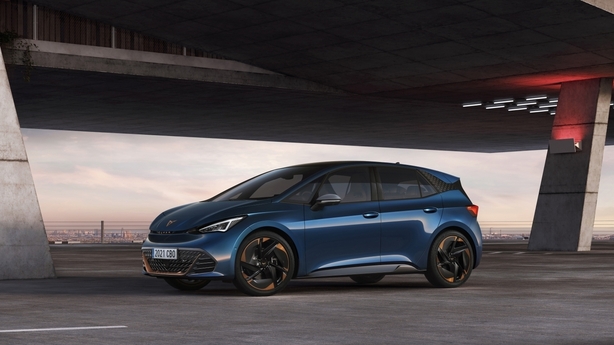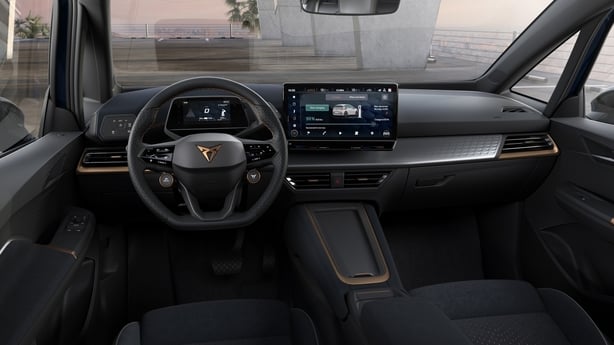Right now, there's something inherently contradictory in having a performance badge on an average sized and priced electric car.
Of course, you can have a top of the range Porsche Taycan or an Audi RS E-tron GT to give you all the performance you’ll ever need, but cars like this come at stratospheric prices, such is the cost of producing them.
Part of the general electric car revolution has been a reassessment by many drivers about how they drive and part of that reassessment is about conserving energy, driven by the desire to get the maximum range from a battery.
So, when CUPRA - SEAT’s performance arm - introduced its Born electric car I began to wonder about that contradiction. If this car is going to be performance driven then there’s going to be a punitive drain on the battery, surely ?.
This turns out to be not quite the case. The Born is capable of lively performance, but being an EV has tamed its ambitions. There’s the battery weight to consider, for example. The Born may not look that big but it weighs in about two tonnes. However, it still manages pretty impressive acceleration. It also manages a decent range.

The Born (named after an old neighbourhood in Barcelona called El Born) owes a great deal of its pedigree to the Volkswagen ID 3 and is an iteration of the ID 3.
It’s built on the same platform, at the same factory and it shares almost all of its technology and battery development to the core development programme in the Volkswagen Group. The challenge for CUPRA was to engineer a car that improved on the rather sedate driving characteristics of the ID 3 and certainly improve on the even more sedate styling of the that car.
The Born manages this with its looks, personality and finish. The car is adorned with crisp lines and creases and is low-slung compared to the ID 3. The copper surround on the air intake and the copper touches inside the cabin are just two of the features that allow the Born to make a more creative statement. While the ID is by nature conservative, the Born is not shackled with the same mainstream parameters.
It is, in short, an ID with attitude.
It’s 2.7 metres long and it sits much lower than its VW stablemates. It’s sprung more firmly too, but not overly so. Bucket seats in the front add to the sporty profile as do rather big wheels.

The interior is well finished and complements the exterior very well. Overall, there’s a quality feel to the cabin and those copper sorrounds are a pleasing touch. There is a smallish instrument screen and a 12" infotainment screen that has good graphics.
There are, however, few buttons - something car manufacturers are being continually criticised for and there are software issues. In the case of the VW group, it has had major problems in this area and last week it fired its software management team after a major recall on the ID 4 and numerous customer complaints globally.
It can be very frustrating trying to use an overly sensitive touchscreen while driving and buttons may be old-fashioned but they are much more practical, especially if you are a right-handed person driving a car that has been designed predominantly as a left-hand car. In the VW group case, you an find yourself trying to deal with a system that has a mind of its own, with either an alarming or a non-response to commands.
We expect fixes on these VW group screen and sliders and they need to happen soon.
The Born drives well but it’s no hot hatch. Arguably though, it doesn’t need to be. It does have a more sporty feedback than the ID and the suspension is sprung more firmly too, but not overly so.
The balance between performance and practicality is quite well struck.
There’s really only room for four in comfort and the boot has a 385 litre capacity, which is good.
In real world conditions you will get about 420 kilometres from the 78 kW battery, while the smaller 58 kW unit should deliver about 350 km. I found the 78 kW battery offered predictable range and was able to plan journeys accordingly and without drama.
The battery rage has been revised since my test drive and there is now an entry level 45 kW version, with a starting price of €39,670. The battery comparable to the test car is now an 82 kW one, with a price of €51,105, including grants.
An ID 32 with a 58 kW battery is currently priced at €42,212 and a comparable Born (62 kW) comes in at €44,140.
This kind of pricing structure is a challenge for many potential EV owners. Notwithstanding the savings on fuel costs, the upfront outlay remains an issue. This explains the great interest buyers are showing in Chinese electric cars, whose pricing has emerged as a real competitive threat to many manufacturers.


